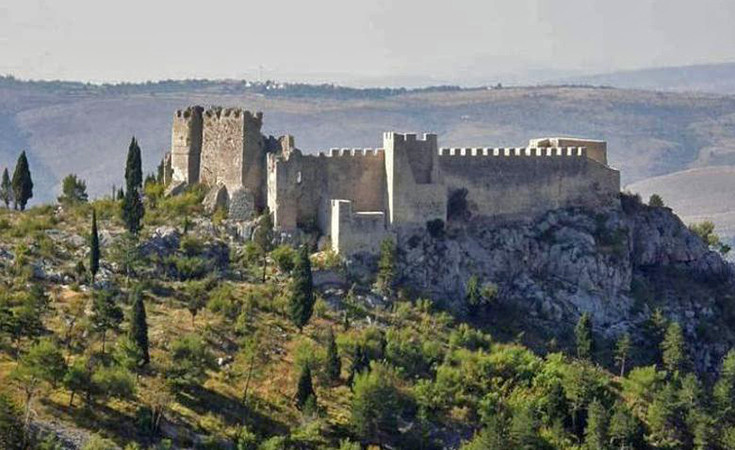
The Fortress Blagaj, locally known as Stjepan-grad, is a complex of city fortresses near the town of Blagaj. The old fortress Blagaj was built on a high, inaccessible karst hill, at an altitude of 310 meters and 266 meters above the source of the river Buna. Archaeological excavations indicate that the settlements existed during prehistory and the Roman period. Remains of fortifications were discovered at each of the highest points of the peak: On the northeastern peak are the remains of a Roman or late antique fortress or observation post known as Mala gradina, while on the southeastern peak the contours of a prehistoric hillfort can be seen.
On the southwestern peak are the remains of today's Stjepan grad, a medieval or Ottoman fortress. It is possible that this complex consisted of two parts in the early medieval period - the Old Town and the Small Gradina, and that this settlement lasted at least until the middle of the 10th century. The earliest written source "Treatise on the Peoples" of the Byzantine emperor Constantine Porphyrogenitus, dated between 948 and 952, mentions two fortifications in this area - Bona and Hum.
After the 10th century, Blagaj played an important role in the development of Hum or Zahumlje. The main influence on its development was the proximity of the main route that connected the Adriatic Sea with the Neretva Valley. Prince Miroslav of Hum held a court in Blagaj. A plaque with an inscription in Cyrillic, found in 1912 near the ruins of the local manor of Bišće and the locality of Vrači, records evidence of the construction of a church during the reign of Prince Miroslav. The plaque is kept today in the National Museum of Bosnia and Herzegovina. In the time of King Tvrtko Kotromanić, Bosnian rulers issued charters in Blagaj, and in May 1404 Blagaj became one of the residences of Duke Sandalj Hranić, and then Count Stjepan Vukčić Kosača, after whom people named the fortress Stjepan grad. The first written reference to it is the peace agreement between Duke Sandalj Hranić and the Venetians, dated November 1, 1423, which was published in Blagaj.
The Ottomans captured Blagaj in 1465. They rebuilt the fort twice: in 1699, when the west tower was repaired, and again in 1827. The garrison was located there until 1835, although the former strategic role of the fortress had long since been taken over by the city of Mostar. Blagaj Fortress is under state protection as a cultural monument.
Author of the aricle

Amila Hasečić - contact: [email protected]